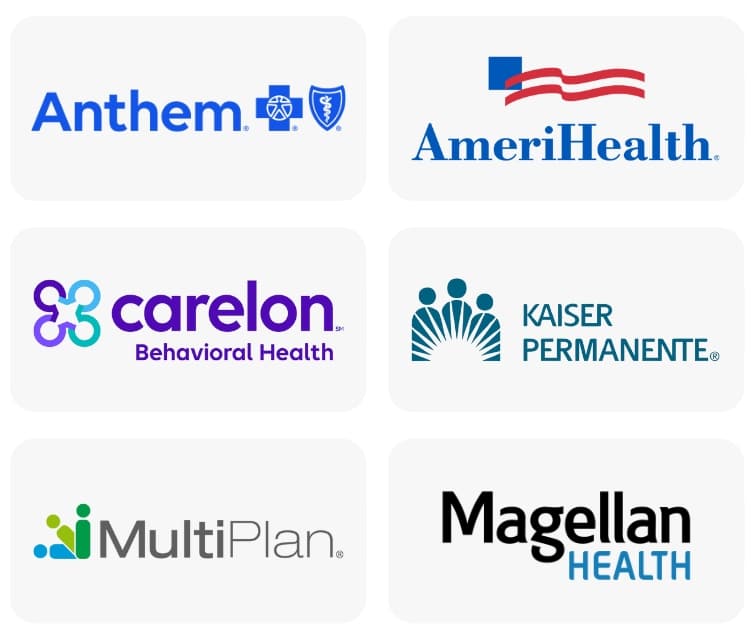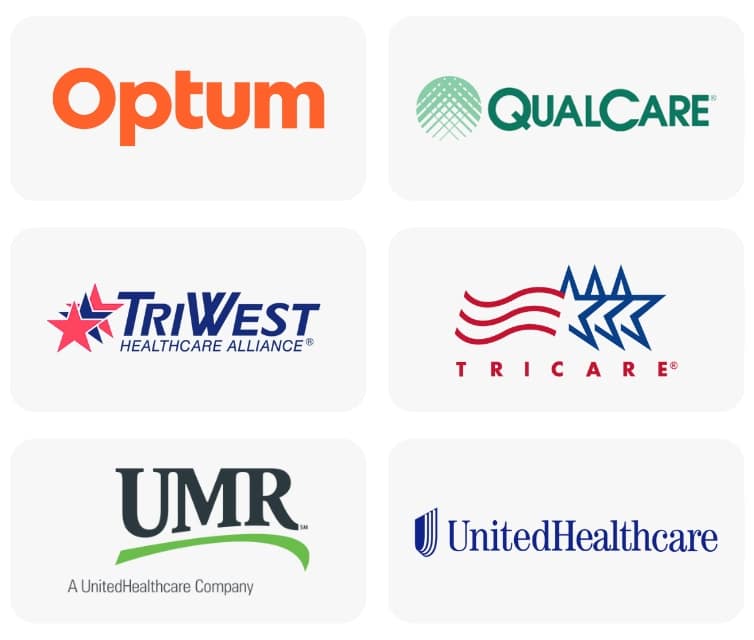Skip To Section
You’ve made the right decision to take back your life from addiction. Recovery is hard work, but you’ll find that it’s well worth it. For people with substance use disorders, the first step in recovery is detoxing from drugs or alcohol. Some people attempt drug or alcohol detox at home, but in many cases, this can be dangerous, or even deadly. Learn why the safest way to detox from substance abuse is under the 24-hour care of medical professionals.

What Is Withdrawal Like?
Without medical care, withdrawing from drugs and alcohol can be painful and cravings may feel unbearable. When you’re addicted to drugs or alcohol, your brain begins depending on substances to function “normally.” When you stop taking drugs, your central nervous system goes into overload as it tries to rebalance itself without the presence of drugs or alcohol. During this process, the brain sends signals and produces chemicals and hormones that cause you to experience withdrawal symptoms and intense urges to use substances again.
Drug withdrawal symptoms can range from mild to even potentially life-threatening. Withdrawal from some substances like opioids, benzodiazepines, and alcohol, can be deadly.
Withdrawal symptoms depend on:
- The substance you’ve been abusing.
- How long you’ve abused the substance.
- Your individual physical make-up and medical or psychological conditions.
Withdrawal can include emotional and physical symptoms, such as:
- Seizures
- Nausea and vomiting
- Diarrhea
- Stomach pain and cramps
- Headaches
- Hallucinations
- Mood swings
- Anxiety
- Depression
- Confusion
- Muscle aches
- Insomnia
- Agitation
- Irritability
- Pain sensitivity
- Changes in body temperature
- Irregular heart rate and blood pressure
During detox, your body rids itself of drugs and alcohol. If you quit drinking or using drugs suddenly — also known as “cold turkey” — you may experience dangerous side effects. Certain medications can help make the detox process more comfortable. A medical professional knows which medications and what doses are best for your individual situation.
Self-Assessment: Am I Addicted?
"*" indicates required fields
Contact Form
Would you like help?
"*" indicates required fields
Risks of Drug Detox at Home
Drug detox at home can come with a number of complications. It can be uncomfortable, dangerous, and set you up for relapse. Drug addiction has a high relapse rate because it is a chronic disease. Detoxing at home can bring on intense drug cravings that make it nearly impossible to refrain from using drugs. Withdrawal symptoms make returning to drug use seem like a good idea just to ease your discomfort.
Quitting drugs cold turkey can cause dangerous withdrawal symptoms within a few hours of your last dose as your brain works to find balance.
The progression of withdrawal and risks of drug detox at home depends on:
#1 Type of Drug
The type of drug abuse makes a difference during drug detox. The following drugs are considered highly addictive with potentially serious withdrawal symptoms:
- Heroin
- Other opioid addictions (ex., prescription opioids like hydrocodone, codeine, oxycodone, and morphine)
- Benzodiazepines (benzos)
- Alcohol
- Methamphetamine
- Cocaine
- Prescription stimulants (ex., ADHD medications)
#2 Length and Severity of Drug Abuse
The larger doses of drugs you use at a time and the more often you use them, the more your brain and body depends on the substance. The higher the level of dependence, the more intense withdrawal will be.
#3 Co-Occurring Disorders and Medical Conditions
Medical conditions can complicate drug withdrawal. For instance, if you have a condition that impacts blood pressure or heart rate, you could experience serious effects during detox. At-home detox can then be more unpredictable and potentially dangerous. Mental health disorders and substance abuse co-occur frequently. Also known as dual diagnosis, co-occurring mental health issues can make at-home detox riskier and worsen possible side effects. Psychiatric symptoms can worsen, putting you at risk for increased anxiety, depression, psychosis, or self-harm.
#4 Use of Detox Medications
Medical detox programs use medications to minimize the side effects and intensity of drug withdrawal. Some people try vitamins, supplements, and over-the-counter (OTC) medications during drug detox at home, but they won’t be as effective as prescription medications. Even if you can obtain detox medications on your own, only a physician can determine the safe doses and combinations of medications needed. Additionally, some OTC medications and supplements can be dangerous during withdrawal, so it’s critical to talk to a physician before taking anything an at-home detox attempt.
Risks of Alcohol Detox at Home
Detoxing from alcohol at home isn’t recommended. If you’re a regular or heavy alcohol user and you stop drinking without the help of a medical professional, you’re at risk for a number of complications from alcohol withdrawal symptoms.
The severity of these alcohol withdrawal symptoms depends on factors like:
- How long you’ve been abusing alcohol.
- How much alcohol you’ve been abusing.
- Your physical and mental health.
- Co-occurring physical and mental conditions.
If you quit alcohol “cold turkey” and have an alcohol addiction or dependency, symptoms of alcohol withdrawal may start as soon as six hours after your last drink.
Alcohol abuse and alcoholism teaches your brain that operating on alcohol is the new normal. When you quit drinking, the brain and central nervous system go into high alert to restore balance. In regular and heavy drinkers, the body compensates for the depressive effects of alcohol by increasing hormones and brain chemicals such as:
- Serotonin
- Epinephrine
- Dopamine
When you quit alcohol cold turkey, your body becomes flooded with abnormally high levels of these chemicals. This is the brain’s way of trying to restore balance and normal functioning without alcohol. That’s why quitting cold turkey can put you at risk for alcohol withdrawal symptoms like:
#1 Seizures
Alcohol withdrawal seizures are sometimes the first sign of alcohol withdrawal. They involve convulsions alternating with involuntary muscle contractions. Withdrawal seizures can occur within six to 48 hours of stopping alcohol consumption.
#2 Delirium Tremens (DTs)
About 30-40% of people who experience seizures get the DTs. Severe symptoms like the DTs typically occur 24 to 48 hours after the last drink and are characterized by:
- Confusion
- Delirium
- High blood pressure
- Shakiness
Without medical help, the DTS can put you at risk for:
- Head injuries
- Lethal dehydration
- Heart attack or stroke
- Choking on vomit
- Death
#3 Abnormal Heart Rhythms
As part of delirium tremens, the heart beats erratically. Unusual shifts in breathing, temperature, and circulation may contribute to a racing heart. You may also experience blood circulation issues like high blood pressure.
#4 Nausea and Vomiting
Symptoms like nausea and vomiting may linger for around a week after you stop drinking. Like other alcohol withdrawal symptoms, these issues result from the brain trying to rebalance neurotransmitters in the absence of alcohol.
#5 Dehydration
Alcohol is a diuretic that increases your urine output and may also increase sweating. You may already be dehydrated going into alcohol withdrawal. During alcohol withdrawal, you can get even more dehydrated due to vomiting and diarrhea, resulting in dangerous electrolyte imbalances. This can affect the central nervous system, causing DTs, seizures, mental confusion, anxiety, and suicidal thoughts.
Other alcohol withdrawal symptoms may include insomnia, headaches, diarrhea, and irritability. Alcohol detox at home is risky. The best way to safely detox from alcohol is to do so under the care of medical professionals. They can help you deal with alcohol withdrawal using research-backed medications and alternative approaches as appropriate. They can also immediately attend to medical emergencies.
Who Should Detox at Home?
Typically, detoxing at home should be reserved for people who are not physically dependent on drugs or alcohol. It could be a viable option if you experience only mild cravings and withdrawal symptoms when you stop taking drugs.
Both alcohol detox at home and drug detox at home can be risky undertakings, but some people do it anyway. Maybe they don’t have insurance or think they can’t afford treatment services. You should know that detox can be painful and uncomfortable. You may think if you detox at home, you’ll feel more comfortable than if you’re in an unfamiliar environment. The truth is many people have an inaccurate idea of what medical detox is like. Perhaps you think you’ll be left alone in a stark, hospital-like room to tough it out. Actually, many detox programs take place in home-like environments with comfortable furnishings and amenities. You’re free to hang out in common spaces as much as you feel like it, and medical staff continually check your comfort level and attend to discomfort or emergencies.
People who detox at home will need to have a high level of support and loved ones around them. The first few days after stopping a drug can be difficult and unpredictable. It is important to be surrounded by people who can help keep you physically and mentally stable. They should also know the potential warning signs to watch for in case withdrawal symptoms escalate and become a medical emergency.
Whether you detox at home or in a detox center, you should attend addiction treatment after detoxing. Otherwise, you are just removing substances from your body, not addressing the reasons behind your addiction. That puts you at high risk for relapse.
Why Medically Supervised Detox Is Best
Detox can be unpredictable. It may include a range of medical and psychological effects that will be difficult to manage on your own. Medical detox programs can determine your level of drug dependence. They’ll assess your current physical health as well as your medical and mental health history to determine how your body may react during addiction withdrawal. This information is critical to determining the safest medications, taper schedules, and approaches to the detox process.
What Happens After Alcohol or Drug Detox?
Detox is the first step in recovery, but it’s not the last. Without structured substance abuse treatment following detox, relapse is almost certain in many cases. Detox doesn’t address the reasons why you use drugs or alcohol or teach you better ways to cope with difficulties. These two factors are critical to long-term addiction recovery. Inpatient or outpatient rehab can help “retrain your brain” through cognitive behavioral therapy and other research-based approaches. Addiction treatment also teaches you healthy ways to cope with difficulties. People often abuse drugs and alcohol to self-medicate:
- Symptoms of co-occurring mental health disorders
- PTSD and trauma
- Relationship and attachment issues
- Low self-worth
- Challenges with emotion regulation
- Environmental influences
- Sociocultural challenges
If you’re ready to leave addiction behind, we can help. Footprints to Recovery offers medical detox as well as several levels of care, so you can find the best fit for your needs. Treatment programs include:
Recovery is possible. If you or a loved one is struggling, call us today for a free, confidential phone consultation.
Our admissions team is available 24/7 to listen to your story and help you get started with the next steps.



